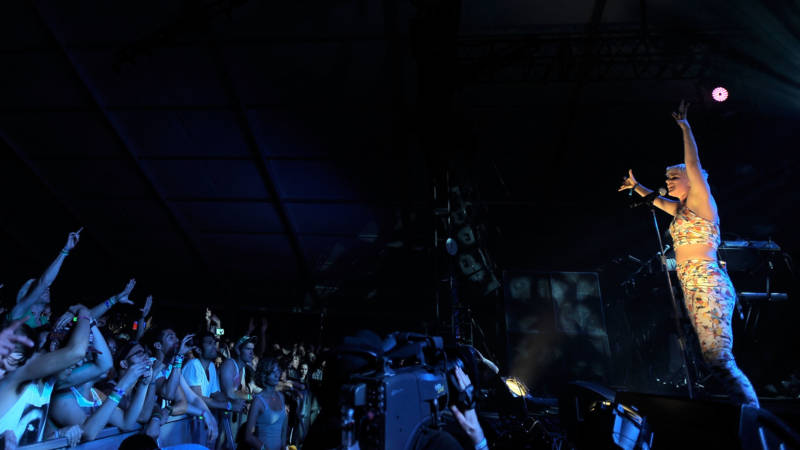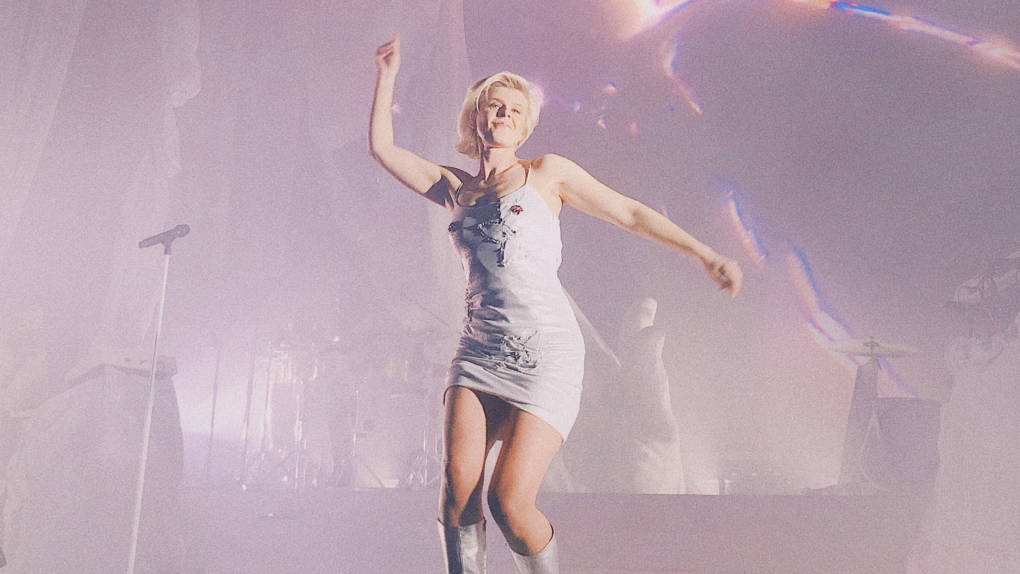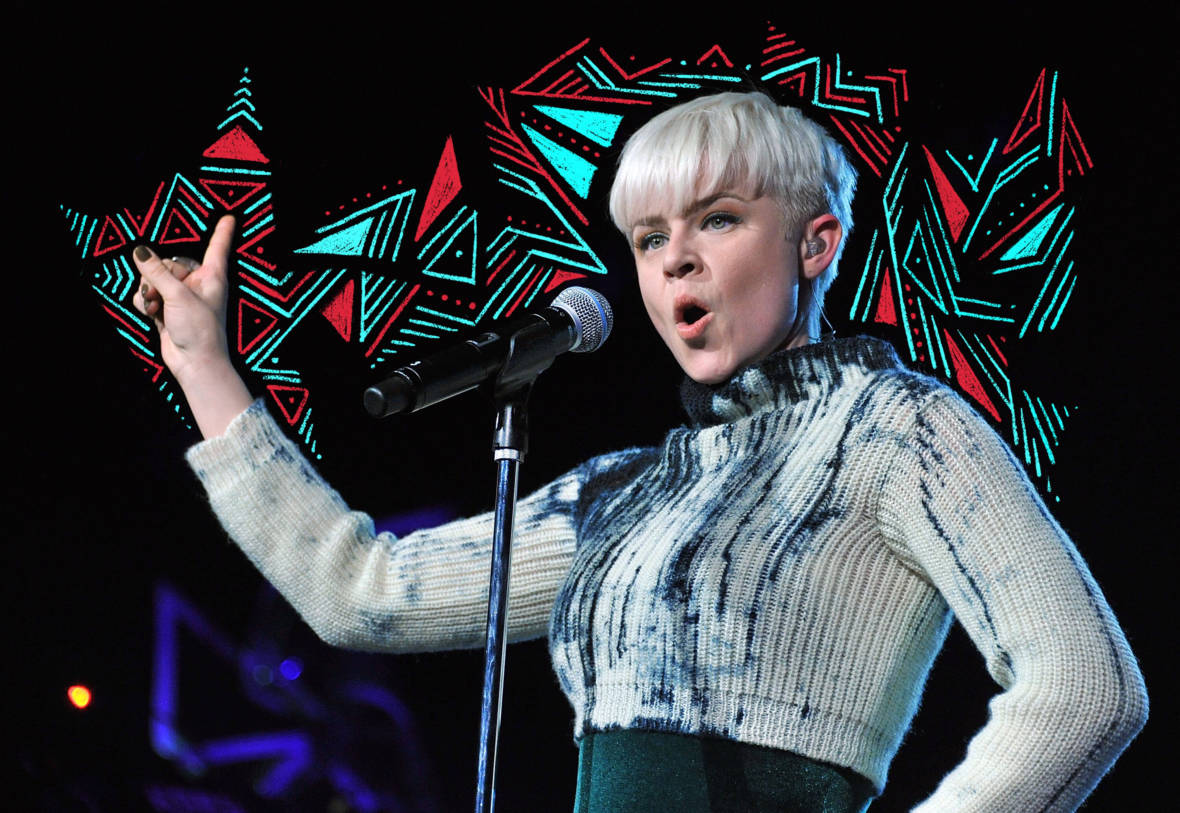It’s as if Robyn wants you to live in that space — to give you time to insert all of your emotions and stories and feelings into the seconds between the lines. Berger says his favorite line is one that gets at an extremely teenage feeling:
Yeah, I know it’s stupid
I just gotta see it for myself
“You’re not being the smartest person on the planet,” he says, unpacking the words. “You’re not being the nicest, you’re not being the best. You’re just a loser — and that’s fine.”
Though “Dancing on My Own” was never a radio hit in the states (I’ve never heard it on the radio once), it has had a long shelf life. Lena Dunham and Allison Williams danced to it in an episode of HBO’s Girls, pushing through their characters’ mid-20s pain. Just this year, it ran under the credits of the Charlize Theron/Seth Rogen rom-com Long Shot and was a major plot point in the Elle Fanning pop fable Teen Spirit. In 2016, Britain’s Got Talent contestant Calum Scott took his slowed-down acoustic cover to No. 2 in the U.K., a higher peak than that of Robyn’s original recording.
But whenever the song has popped up in the close to 10 years since its release, the moral of its story has remained the same. Everything I’ve found in the months I’ve spent thinking about it, talking to people about it, working it into my bones, has shown that this song, all about being alone, has helped people find community and togetherness.
Nora McInerny is one such example. “That whole album [Body Talk] reminds me of it being October in Minnesota,” she says. “The sun shining, this really blue crisp sky. The air is cold, the leaves are turning but it hasn’t snowed yet, and I’m driving down the freeway, listening to these songs that are so hopeful and energetic. It just feels like falling in love when I hear those songs.”
Nora is a writer and host of the podcast Terrible, Thanks For Asking. She says the moment she met her husband, Aaron, he had one question for her: “Do you like Robyn?”
Aaron made Nora consume the singer’s entire discography, and it became the soundtrack to their courtship. She says she remembers him killing Robyn’s songs at karaoke, or dancing so wildly to them that he once caused a good friend to tear his ACL on the dance floor: “Strangers would applaud him.” When they got married, they walked down the aisle to a Robyn song.
But a few years after their relationship began, it ended. Aaron was diagnosed with brain cancer. Robyn’s music became a soundtrack to a different part of their lives.
Before Aaron died, he made Nora a playlist of songs to play at his funeral. She says about 1,000 people showed up to the “makeshift” ceremony, put together in a big studio space in Minneapolis. When the crowd had thinned out to about 100, the music, hand-selected by the man whose life they were there to honor, was still playing. Nora, a little drunk by then, found herself dancing with her friends to “Dancing on My Own.”
To this day, she says, there’s a moment in the song that makes her cry:
So far away, but still so near
The lights go on, the music dies
But you don’t see me standing here
I just came to say goodbye
“What’s true of most human experiences is that you’re going to have more than one emotion at a time,” she says. “It’s very rare to have all of that in a song.”
These days, she says, hearing “Dancing on My Own” makes her think of the friends she was with that night, or of how she now loves to pull her and Aaron’s son out onto the dance floor at parties. She thinks about being in communion with others, finding some way to get through it all.
Nora, of course, is not alone. Go down the rabbit hole of live videos and you’ll see crowds bursting into the chorus a cappella, singing perfectly and earnestly like a children’s choir. Or the one where dozens of Robyn concertgoers wait on a subway platform after a show in New York: bundled up, crammed shoulder to shoulder, singing “Dancing on My Own,” together.
This is what’s so confusing, so endearing and so lovable about this song. When I talk to people about it, they tell me how it always manages to make them feel less lost — eager to dance themselves toward the next day, or the next party, or the next lover. It’s a song about loneliness, but the moment you hear it, you instantly feel less alone.




